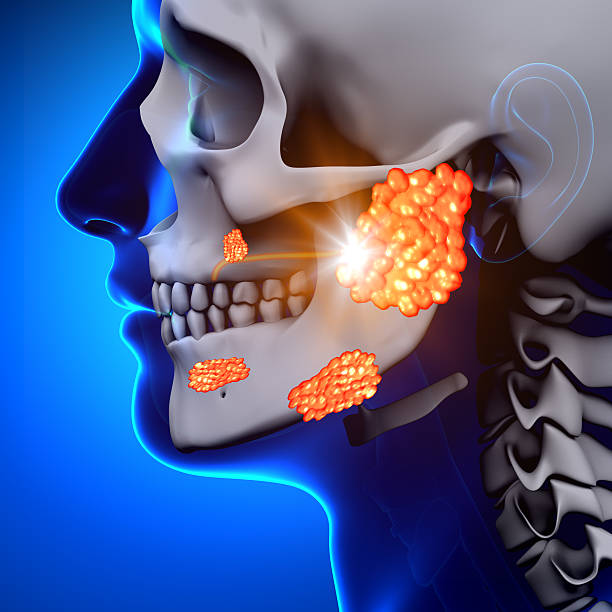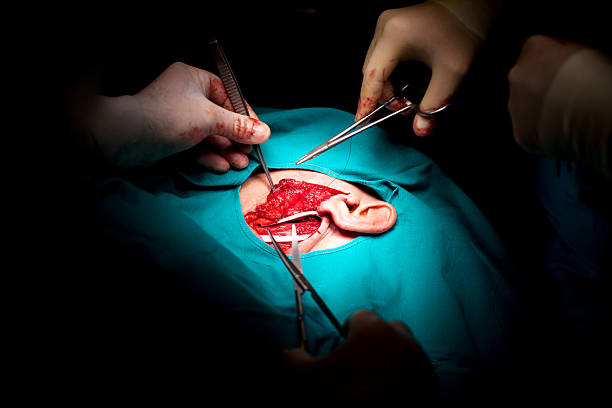Early stage submandibular gland cancer is a rare form of salivary gland cancer that primarily affects the submandibular glands located beneath the jaw. Though uncommon, this type of cancer can be effectively managed when detected early.
“While submandibular gland cancer can be challenging, advances in surgical oncology allow us to perform highly precise surgeries that minimize damage to surrounding tissues. Early detection plays a crucial role in offering patients the best chance for a full recovery.”
– Dr. Devendra Chaukar, a highly regarded head and neck oncologist in Mumbai with over 20 years of expertise in surgical oncology.
Submandibular gland cancer is a type of salivary gland cancer that affects the submandibular glands located beneath the jaw. These glands produce saliva, which aids in digestion and keeps the mouth moist. Cancer developing in these glands can interfere with normal functions and lead to several symptoms. This form of cancer is relatively rare and usually manifests as a lump or swelling in the affected area.

What Are the Symptoms of Submandibular Gland Cancer?
The symptoms of early stage submandibular gland cancer can vary but typically include:
●A painless lump or swelling beneath the jaw
●Pain or discomfort around the neck or jaw
●Difficulty swallowing or chewing
●Numbness or weakness in the face
●Unexplained weight loss
If you notice any of these symptoms, it’s essential to consult a specialist for an accurate diagnosis and care.
Experiencing symptoms related to submandibular gland cancer? Get expert guidance for early detection and an effective treatment plan.
Risk Factors for Submandibular Gland Cancer
While the exact cause of submandibular gland cancer is not fully understood, several risk factors may contribute to its development:
- Age: It is more common in individuals over 50.
- Gender: Men are slightly more likely to develop this cancer than women.
- Radiation Exposure: A history of radiation therapy to the head and neck area increases the risk.
- Genetic Mutations: In some cases, inherited genetic factors may contribute to the risk.
How is Early-Stage Submandibular Gland Cancer Diagnosed?
Diagnosing early-stage submandibular gland cancer involves several steps:
- Physical Examination: The doctor will examine the neck and jaw for signs of lumps or swelling.
- Imaging Tests: CT scans, MRIs, or ultrasounds may be used to assess the size and location of the tumor.
- Biopsy: A biopsy may be performed to confirm the presence of cancer cells and determine the type of cancer.
“Early-stage cancers are often detected through imaging, which is why regular check-ups with an expert are essential for those at risk,” advises Dr. Devendra Chaukar, one of the best surgical oncologist in Mumbai.
Treatment Options for Early Stage Submandibular Gland Cancer
The treatment for early stage submandibular gland cancer depends on the tumor’s size and location and the patient’s overall health. Common treatment options include:

- Surgery: The most common approach for early-stage submandibular gland cancer is the surgical removal of the tumor along with some surrounding tissue to ensure all cancerous cells are eliminated.
- Radiation Therapy: For tumors that are hard to reach or have spread slightly, radiation therapy may be recommended after surgery.
- Chemotherapy: Rarely, chemotherapy is used if the cancer is more advanced or has spread to other body parts.
“When performing surgery for submandibular gland cancer, precision is key. We employ the latest techniques to ensure complete tumor removal while preserving as much function as possible in the affected area,” explains Dr. Devendra Chaukar, a distinguished surgical oncologist in Mumbai.
If you or a loved one has been diagnosed with early stage salivary gland cancer, reach out to a seasoned oncologist for personalized care and support.
Prognosis and Survival Rate
The prognosis for early-stage submandibular gland cancer is generally very favourable, especially when the tumor is detected early. With modern surgical techniques, the cancer can often be removed successfully without the need for extensive follow-up treatments. The survival rate for early-stage submandibular gland cancer is high, with most patients recovering fully after surgery.
Many patients go on to lead normal, healthy lives post-treatment. Early intervention is the key, as it allows for more targeted treatments and minimizes the risk of the cancer spreading. Factors like age, overall health, and the tumor’s specific characteristics can also influence prognosis.
If the cancer has not spread beyond the gland, and no lymph nodes are involved, the chances of a complete recovery are significantly higher. For those undergoing surgery and additional treatments like radiation, the long-term outcomes remain positive. Early-stage detection and personalized care are key drivers of successful outcomes in this condition.
Conclusion
Early detection of submandibular gland cancer can significantly improve the chances of successful treatment. If you suspect any symptoms related to salivary gland cancer, seek the advice of a qualified oncologist. The expertise of a salivary gland cancer specialist in Mumbai, like Dr. Devendra Chaukar, can ensure you receive the best care available.
Explore advanced treatment options for early stage submandibular gland cancer with an experienced oncologist. Schedule a consultation today and take control of your health.
Frequently Asked Questions:
What are the first symptoms of submandibular gland cancer?
Salivary gland cancer first symptoms may include a painless lump beneath the jaw, difficulty swallowing, or facial numbness.
Can submandibular gland cancer spread?
While early-stage submandibular gland cancer is localized, it can spread to nearby lymph nodes or other areas if not treated.
Is surgery necessary for early-stage submandibular gland cancer?
Surgery is often the primary treatment for early-stage submandibular gland cancer, where the tumor is surgically removed to prevent further spread.
How is early-stage submandibular gland cancer different from advanced stages?
In the early stages, cancer is confined to the gland and can be treated with minimal complications, whereas advanced stages may involve spread to nearby tissues.
Can submandibular gland cancer return after treatment?
While the recurrence rate is low after early-stage treatment, it is possible, so regular follow-ups are essential for monitoring.

Dr Devendra Chaukar
Dr. Devendra Chaukar is a renowned Head and Neck Surgical Oncologist with over 20 years of experience in treating complex head and neck cancers. A graduate of Tata Memorial Hospital, Mumbai, he specializes in minimally invasive surgeries and organ-preserving treatments. Dr. Chaukar is deeply committed to patient-centric care and advancing cancer treatment through research and education.


Recent Comments